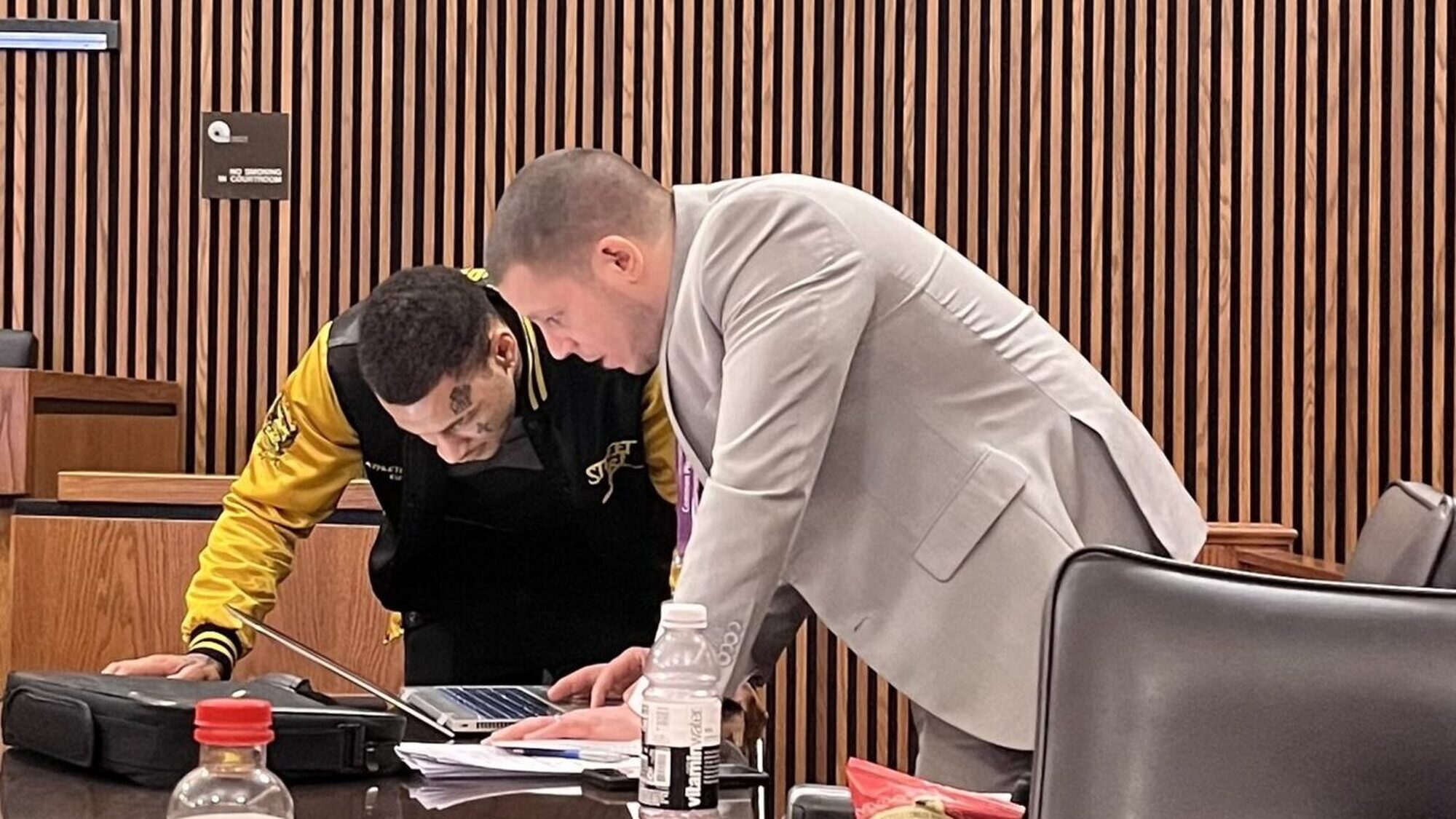Domestic Violence / Intimate Partner Violence Resources
Resources to support pretrial systems and community partners to take positive steps in responding to domestic violence and intimate partner violence.
What is DV/IPV?
Domestic violence (DV) is defined as a pattern of abusive behavior in any relationship that is used by one person to gain or maintain power and control over another person. Although similar, intimate partner violence (IPV) is defined as abuse or aggression in a romantic relationship, whether dating or spousal. This manner of violence can be physical, sexual, emotional, economic, psychological, or technological.
The underreporting of domestic violence can make it difficult to estimate the true scope of violence against women and men. We know that every day, almost 20 people a minute, about 10 million women and men a year, are physically abused by someone close to them.
DV/IPV in the Criminal Legal System
Criminal legal stakeholders are struggling with the realities of how to respond to:
- Survivors of DV/IPV
- An accused person charged with an offense related to DV/IPV
- An accused person charged with an offense related or unrelated to DV/IPV who may also be a survivor of DV/IPV
Pretrial agencies are, by design, in the business of gathering information. Pretrial officers typically collect information about an individual’s likelihood of committing a crime or failing to appear in court if released pretrial. Knowing an individual’s needs can also provide several opportunities for constructive community problem-solving.
The resources here include information on the criminal legal system’s role in responding to domestic violence/intimate partner violence (DV/IPV).
Understanding DV/IPV
The following resources provide a background and a better understanding of DV/IPV situations.
This is a fact sheet about domestic violence from the National Coalition Against Domestic Violence.
The Power and Control Wheel is a tool used to help understand the overall pattern of abusive and violent behaviors, which are used by a batterer to establish and maintain control over their partner. This is a resource from the National Center on Domestic and Sexual Violence.
In this resource from the National Coalition Against Domestic Violence, the authors explore how to determine who may be the core abuser and who may be the primary victim, when both people in a relationship use violence.
This book review of Abusive Endings examines what happens when women begin to leave abusive relationships. The book seeks to “challenge assumptions” and “transform practice and policy.” The review is by Dr. Tammy Meredith.
Pretrial System Responses to DV/IPV
The following resources provide information on pretrial system responses to DV/IPV cases.
Based on a survey of 44 jurisdictions across the United States and five in-depth case studies, this report from the Center for Court Innovation examines which components of general pretrial reform efforts have been adapted for application in IPV cases, what specialized practices have emerged, and how jurisdictions contend with the tension between ensuring the rights of the accused prior to any conviction and promoting survivor autonomy and safety.
Those responsible for responding to alleged violence between intimate partners struggle with how to effectively secure victims’ safety while ensuring that those who allegedly use violence are held accountable and put on a path to change their abusive behavior. This case study from the Urban Institute examines a pilot program in Buncombe County, North Carolina, that was designed to manage or mitigate the challenges of monitoring alleged abusers in the community.
This case study by the Urban Institute describes Project Safe Release, a pilot program implemented in Cumberland County, Maine, to better identify the needs of women entering the Cumberland County Jail, understand their victimization histories, and connect them to appropriate services before and after release. It also shows how other localities can better coordinate services for women released on pretrial supervision.
This report from the Battered Women’s Justice Project explores questions such as: What “pretrial” conditions should be in place for alleged DV cases? Under what circumstances should the court deny pretrial release? Should a no-contact order be part of all pretrial release conditions? How should pretrial release account for victims’ interests, autonomy, and safety needs?
The Center for Court Innovation convened jail reduction and victim advocates for a facilitated roundtable discussion focused specifically on the role of victims in pretrial supervised release programs. Dialogue between these organizations is particularly crucial because many offenses that lead to jail involve victims. In particular, victims of intimate partner violence have often felt sidelined by criminal justice processes that focus almost exclusively on defendants. This report summarizes the findings of the roundtable discussion.
This position statement from the Association of Prosecuting Attorneys offers a practitioner’s perspective on pretrial release in domestic violence cases and supports victim-centered and evidence-informed prosecutorial practices.
The Center for Justice Innovation works with communities and justice systems to advance equity, increase safety, and help individuals and communities thrive.
Community & Criminal Legal Responses to DV/IPV
The following resources are information on community and criminal legal responses to DV/IPV.
This report from the Vera Institute of Justice, explores the realities of survivors who live with a history of both victimization and incarceration. The report finds that the shame and stigma of being “offenders” eclipses the less visible but painful reality that they are also survivors of violence—harm that may have happened to them before, during, and/or after their time behind bars.
In this paper from Asset Funders Network and FreeFrom, the authors approach intimate partner violence as an asset-building issue, rather than solely through crisis intervention.
This report from the National Center for Injury Prevention and Control and the Centers for Disease Control and Prevention presents a select group of strategies to help communities and states sharpen their focus on prevention activities with the greatest potential to prevent intimate partner violence (IPV) and its consequences across the lifespan.
In this paper by Robert Moyer, Ph.D., the author examines the effectiveness of Batterer Intervention Programs on men convicted of DV offenses. This paper was presented to York/Springvale (ME) Domestic Violence Case Coordination Project advisory board, and the Cumberland County (ME) Violence Intervention Partnership advisory board.
ACTS’ Domestic violence services include an 18-bed shelter, court advocacy and accompaniment; crisis counseling, safety planning and psycho-educational support groups for adults and children; a 24-hour hot line; groups for court-ordered men and women; specialized services for Spanish speaking victims; community education as well as training for allied professionals, staff and potential volunteers.
Esperanza United provides family advocacy to Latin@ communities in the Twin Cities metropolitan area, meeting survivors where they are. They provide emergency shelter, comprehensive community-based advocacy, co-advocacy with other shelter programs and community organizations, and a 24/7 bilingual crisis line for Minnesota’s Latin@ community.
This justice briefing from The Council of State Government’s Justice Center concluded their analysis of domestic violence responses in Rhode Island and presented recommendations to the Domestic Violence Executive Working Group. Recommendations were based on the analysis of data collected between June 2022 and June 2023.
A resource to help survivors of sexual assault, abuse, and harassment understand their rights and access needed resources. It provides information and connections to help them seek accountability and healing.
Stalking Resources
The resources listed below provide resources and information on stalking.
SPARC is a federally funded project providing education and resources about the crime of stalking. SPARC aims to enhance the response to stalking by educating the professionals tasked with keeping stalking victims safe and holding offenders accountable. SPARC ensures that allied professionals have the specialized knowledge to identify and respond to the crime of stalking.
The US Department of Justice has a list of resources, definitions, and contacts regarding stalking.
Data Resources
The following resources provide data on DV/IPV.
This report from the National Center for Injury Prevention and Control Division of Violence Prevention is intended for use by individuals and organizations interested in gathering public health surveillance data on IPV.
The National Intimate Partner and Sexual Violence Survey is administered annually and examines the prevalence of intimate partner violence, sexual violence, and stalking among women and men in the United States.
Create a Pretrial Services Inventory
Consider using the APPR’s Inventory of Pretrial Services to compile a list of the available DV/IPV-related resources.
A pretrial services inventory lists the existing and future services, activities, and interventions that one or more agencies in your jurisdiction provide or will provide to released people. Common services include court date notifications, check-ins with pretrial staff, and referrals to behavioral health treatment. Pretrial services staff typically provide these services and referrals.
Documenting your pretrial services in an inventory is useful because:
- It makes the policy team aware of the options that exist today to help people appear in court and remain arrest-free during pretrial release
- An inventory helps the team to understand how these options will be the same or different after the PSA is implemented as part of your jurisdiction’s pretrial improvement efforts
- It shows which agency or agencies provide each service
Your inventory may indicate gaps in services that the team should consider in the future
The subcommittee should use the inventory when its members prepare the table of release conditions.
Key links
- Pretrial Services Inventory (XLS) External Link




